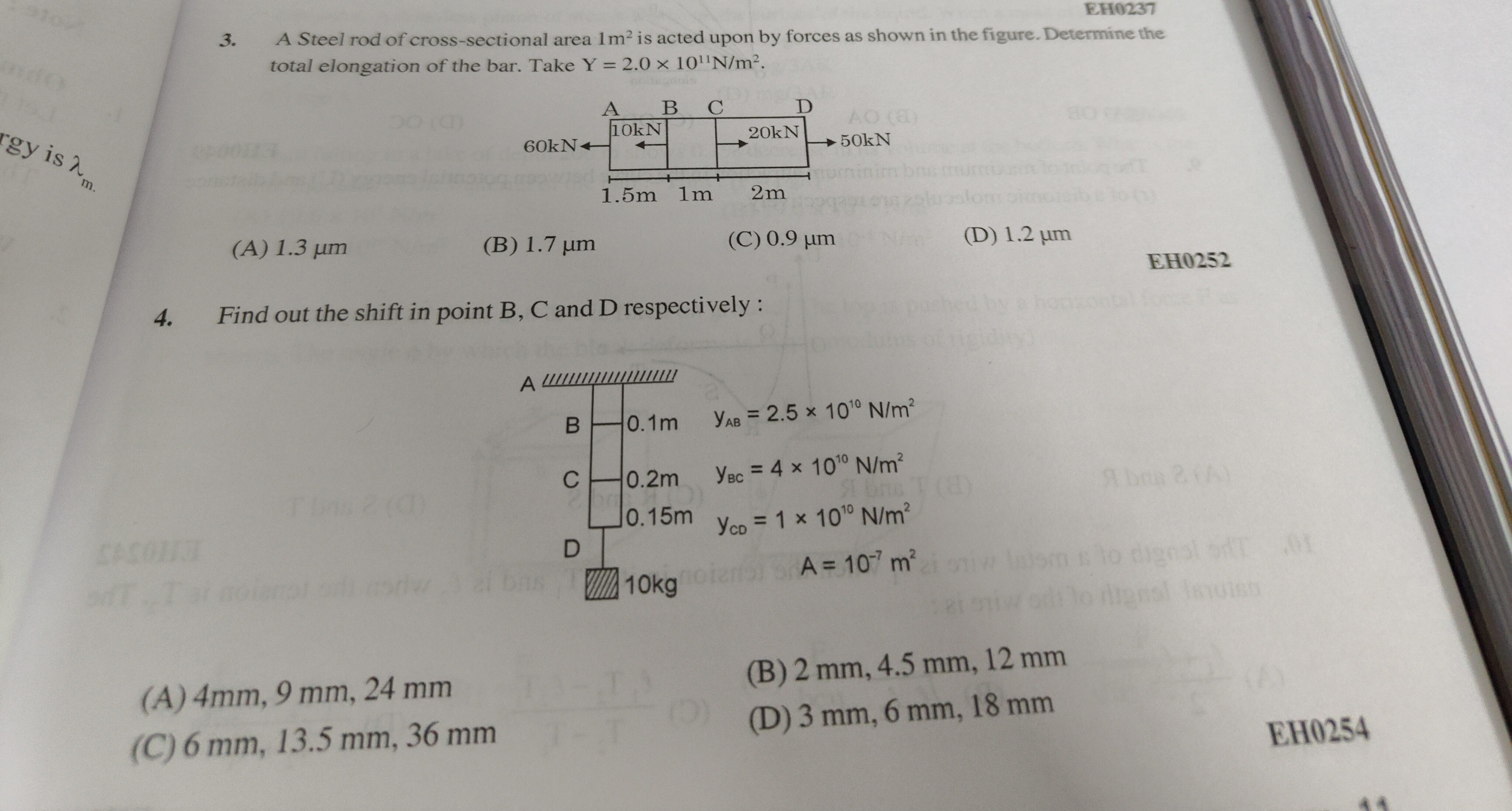Question
Question: A Steel rod of cross-sectional area 1m² is acted upon by forces as shown in the figure. Determine th...
A Steel rod of cross-sectional area 1m² is acted upon by forces as shown in the figure. Determine the total elongation of the bar. Take Y = 2.0 × 10¹¹N/m².

1.3 µm
1.7 µm
0.9 µm
1.2 µm
1.3 µm
Solution
-
Identify segments and forces: The rod is divided into three segments: AB (length 1.5m), BC (length 1m), and CD (length 2m). Forces are applied at the ends and interfaces.
- Force at the left end of AB: FA=60kN (left)
- Force at B: FB=10kN (left)
- Force at C: FC=20kN (right)
- Force at the right end of CD: FD=50kN (right)
-
Calculate internal forces in each segment: We use the method of sections. For equilibrium, the sum of external forces is 60kN+10kN (left) =70kN (left) and 20kN+50kN (right) =70kN (right). The system is in equilibrium.
- Segment AB: Consider a cut in AB. The force to the left of the cut is 60kN (left). Thus, the internal tensile force in AB is FAB=60kN=60×103N.
- Segment BC: Consider a cut in BC. The forces to the left of the cut are 60kN (left) and 10kN (left). The net force to the left is 60+10=70kN. Thus, the internal tensile force in BC is FBC=70kN=70×103N.
- Segment CD: Consider a cut in CD. The forces to the left of the cut are 60kN (left), 10kN (left), and 20kN (right). The net force to the left is 60+10−20=50kN. Thus, the internal tensile force in CD is FCD=50kN=50×103N.
-
Calculate elongation in each segment: The elongation of a segment is given by ΔL=AYFL.
- Given: A=1m2, Y=2.0×1011N/m2.
- ΔLAB=AYFABLAB=(1m2)×(2.0×1011N/m2)(60×103N)×(1.5m)=2×101190×103m=45×10−8m=0.45×10−6m=0.45μm.
- ΔLBC=AYFBCLBC=(1m2)×(2.0×1011N/m2)(70×103N)×(1m)=2×101170×103m=35×10−8m=0.35×10−6m=0.35μm.
- ΔLCD=AYFCDLCD=(1m2)×(2.0×1011N/m2)(50×103N)×(2m)=2×1011100×103m=50×10−8m=0.50×10−6m=0.50μm.
-
Calculate total elongation: The total elongation is the sum of elongations of all segments.
- Total Elongation = ΔLAB+ΔLBC+ΔLCD=0.45μm+0.35μm+0.50μm=1.30μm.
